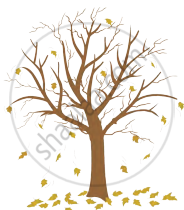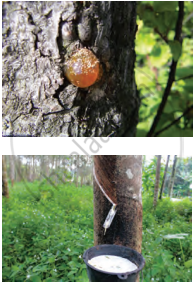Topics
Laws of Motion
- Motion and Rest
- Distance and Displacement
- Speed and Velocity
- Effect of Speed and Direction on Velocity
- Uniform and Non-uniform Motion
- Acceleration and Retardation
- Types of Acceleration
- Graphical Representation of Motion
- Displacement - Time Graph Or Distance - Time Graph
- Velocity - Time Graphs
- Equations of Motion by Graphical Method
- Derivation of Velocity - Time Relation by Graphical Method
- Derivation of Displacement - Time Relation by Graphical Method
- Derivation of Displacement - Velocity Relation by Graphical Method
- Uniform Circular Motion (UCM)
- Newton’s Laws of Motion
- Newton's First Law of Motion
- Newton's Second Law of Motion
- Newton's Third Law of Motion
- Conservation of Linear Momentum and Its Principle
Work and Energy
Current Electricity
- Electricity
- Potential and Potential Difference
- Free Electrons
- Electric Current
- Ohm's Law (V = IR)
- Resistance and Resistivity of a Conductor
- Electric Circuit
- Symbols and Functions of Various Components of an Electric Circuits
- Conductors and Insulators
- Experimental Verification of Ohm’s Law
- System of Resistors
- Resistors in Series
- Resistors in Parallel
- Domestic Electrical Connections
- Precautions to Be Taken While Using Electricity
Measurement of Matter
- Laws of Chemical Combination
- Law of Conservation of Matter (Law of Conservation of Mass)
- Law of Constant Proportions (Law of Definite Proportions)
- Atoms: Building Blocks of Matter
- Atomic Mass
- Symbols Used to Represent Atoms of Different Elements
- Molecules of Elements and Compounds
- Molecular Mass
- Mole Concept
- Avogadro’s Number
- Valency
- Variable Valency
- Ions (Radicals) and Its Types
- Chemical Formulae of Compounds
Acids, Bases and Salts
- Concept of Acid, Base, and Salt
- Ionic Compounds
- Dissociation of Ionic Compounds
- Arrhenius Theory of Acids and Bases
- Basicity and Acidity
- Ph of Solution
- Universal Indicators
- Neutralization Reaction
- Reactions of Acids
- Reactions of Bases
- Salts
- Classification of Salts
- Water of Crystallization
- Ionic Compounds
- Electrolysis
- Electrolysis of Water
Classification of Plants
Energy Flow in an Ecosystem
Useful and Harmful Microbes
Environmental Management
- Weather and Climate
- Importance of Weather in the Living World
- Meteorology
- India Meteorological Department
- Solid Waste Management
- Waste and Its Categories
- Biodegradable Waste
- Non-Biodegradable Wastes
- Harmful effects of solid waste
- Necessity of Solid Waste Management
- 7 Principles of Solid Waste Management
- Period Required for Degradation of Waste
- Disaster Management
- First Aid and Emergency Action
- Methods of Transporting Victims/Patients Safely
Information Communication Technology
Reflection of Light
- Introduction to Light
- Mirrors
- Plane Mirror
- Spherical Mirrors
- Concave Mirror
- Convex Mirror
- Terms Related to Spherical Mirrors
- Rules for Drawing Ray Diagrams
- Image Formation by Concave Mirror
- Image Formation by Convex Mirror
- Divergence and Convergence of Light
- Sign Convention
- Mirror Equation/Formula
- Linear Magnification (M) Due to Spherical Mirrors
Study of Sound
Carbon : An Important Element
- Carbon: A Versatile Element
- Properties of Carbon
- Allotropy and Allotropes of Carbon
- Crystalline Allotropes of Carbon: Diamond
- Crystalline Allotropes of Carbon: Graphite
- Crystalline Allotropes of Carbon: Fullerene
- Non-crystalline/Amorphous Forms: Coal
- Non-crystalline/Amorphous Forms: Charcoal
- Non-crystalline/Amorphous Forms: Coke
- Hydrocarbons
- Solubility of Carbon
- Reaction of Carbon
- Carbon Dioxide
- Fire Extinguisher
- Methane
- Biogas Plant
Substances in Common Use
- Important Salts in Daily Life
- Properties and Uses of Sodium Chloride
- Preparation and Uses of Baking Soda
- Preparation and Uses of Bleaching Powder
- Preparation and Uses of Washing Soda
- Some Crystalline Salts
- Soap
- Radioactivity
- Nature of Radioactive Radiation
- Characteristics of Alpha, Beta and Gamma Rays
- Uses of Radioactive Isotopes
- Hazards of Radioactive Substances and Radiation
- Chemical Substances in Day to Day Life
- Food Colours and Essences
- Dye
- Artificial Colours
- Deodorant
- Teflon
- Powder Coating
- Anodizing
- Ceramic
Life Processes in Living Organisms
- Transportation in Living Organisms
- Transportation in Plant
- Transportation of Water in Plants
- Transportation of Food and Other Substances in Plants
- Excretion
- Excretion in Plants
- Human Excretory System
- Dialysis and Artificial Kidney
- Control and Co-ordination
- Control and Co-ordination in Plants
- Control and Co-ordination in Human Being
- Nervous Control
- Human Nervous System
- Central Nervous System (CNS)
- Peripheral Nervous System (PNS)
- Autonomic Nervous System (ANS)
- Chemical Control
- Endocrine Glands: Location and Important Functions
Heredity and Variation
- Heredity or Inheritance
- Inherited Traits and Expression of Traits
- Chromosomes - The Carriers of Heredity
- Types of Chromosomes
- Deoxyribonucleic Acid (DNA) and Its Structure
- Ribonucleic acid (RNA)
- Gregor Johann Mendel – Father of Genetics
- Mendelian Inheritance - Mendel’s Law of Heredity
- Monohybrid Cross
- Dihybrid Cross
- Genetic Disorders
- Disorders Due to Chromosomal Abnormalities
- Diseases Occuring Due to Mutation in Single Gene (Monogenic Disorders)
- Mitochondrial Disorder
- Disorders Due to Mutations in Multiple Genes : (Polygenic Disorders)
Introduction to Biotechnology
- Tissues - “The Teams of Workers”
- Animal Tissues
- Epithelial Tissue
- Connective Tissue
- Muscular Tissue
- Nervous Tissue
- Plant Tissues
- Meristems or Meristematic Tissues
- Permanent Tissue
- Simple Permanent Tissues (Supporting Tissue)
- Complex Permanent Tissues
- Biotechnology
- Tissue Culture
- Changes in Agricultural Management Due to Biotechnology
- Application of Biotechnology in Floriculture, Nurseries and Forestry
- Agritourism
- Animal Husbandry (Livestock)
- Dairy Farming
- Poultry Farming
- Sericulture
Observing Space : Telescopes
- Introduction
- Excretory Products in Plants
Introduction:
Excretion is the process by which living organisms remove toxic and waste products generated through metabolic activities. While animals have specialised systems for excretion, plants lack such systems. Instead, they use simpler mechanisms to eliminate their waste. Most of the waste substances of plants are stored in vacuoles of leaf cells and in flowers, fruits, and the bark of the stem. After some time, these parts fall off. Some other waste materials are stored in old and worn xylem in the form of resin and gum. Some waste materials are also given out through roots into the surrounding soil.

Leaf fall
Examples of Plant Waste:
- Oils: Found in orange, eucalyptus, and jasmine plants.
- Latex: From rubber and papaya trees.
- Gums: From acacia trees.

Gum and latex
Excretory Products in Plants:
- Gaseous Wastes: Plants produce oxygen during photosynthesis and carbon dioxide during respiration. These gases are released through stomatal pores on leaves. Oxygen is used for respiration, while carbon dioxide is reused in photosynthesis.
- Water: Excess water is released through transpiration, which occurs via stomata, lenticels, and surfaces of stems and fruits.
- Organic By-Products: Plants also produce organic wastes such as gums, resins, oils, and latex during metabolic activities. These are stored in parts like bark, stems, and leaves. Over time, plants shed these parts, removing the stored waste.
- Aquatic Plants: Aquatic plants excrete waste directly into the surrounding water through diffusion. Terrestrial plants can excrete some waste into the soil.
If you would like to contribute notes or other learning material, please submit them using the button below.
